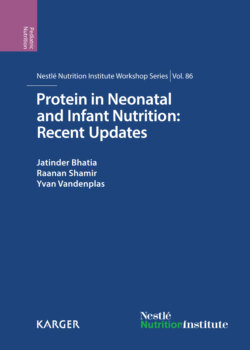Читать книгу Protein in Neonatal and Infant Nutrition: Recent Updates - Группа авторов - Страница 30
На сайте Литреса книга снята с продажи.
Target Population: Who Is the High-Risk Infant?
ОглавлениеThe risk of atopy is increased to about 1:3 if the parent or sibling is atopic, and 70% if both parents are atopic [26]. Hence, the presence of a positive family history of atopic disease represents the condition to define the newborn baby as at-risk infant. In the literature, this definition varied from infants/children having two allergic parents or relatives [25] to (a more recent one) at least one parent and/or sibling [17] with a documented (history of) allergic disease sometimes also supplemented with an increased cord blood IgE [2]. However, familiar allergy should be doctor diagnosed and not based on self-reported symptoms, as the perceived prevalence of food allergy is far greater than the real occurrence, determining an overproportion of subjects considered at high risk. Conversely, as many atopic subjects do not have a family history of atopy [26], the cost-benefit ratio of prevention in the overall population should be considered, on condition that the preventive recommendations have no adverse effects.
Extrapolating the data from the 15-year follow-up of the largest German Infant Nutritional Intervention (GINI) and LISA birth cohort studies, it has recently been reported that parental allergic diseases with first onsets before and after the birth of a child both increase the risk of childhood allergic diseases, especially for asthma. Furthermore, it suggests that a reasonable proportion of participants (6.6% in that report) in longitudinal studies are misclassified with respect to their family history of allergic disease when this history is only assessed at baseline [27].
Clinical trials have demonstrated that the risk of developing atopic dermatitis is reduced when using HF to feed infants with a documented risk of atopy when breastfeeding is not practiced [1, 2, 16, 26-30]. In 2006, a Cochrane review, based on 14 randomized controlled trials (RCTs) or quasi-RCTs, concluded that there is no evidence to support feeding with HF for the prevention of allergy compared to exclusive breastfeeding. In high-risk infants who are not breastfed, there is limited evidence that prolonged feeding with HF compared to CM standard formula (SF) reduces infant allergy and infant CMA [26]. As the potential benefit of these formulas has only been documented in infants at genetic risk of developing atopic disease, additional studies are needed particularly among unselected infants or infants at low risk [2, 31].
